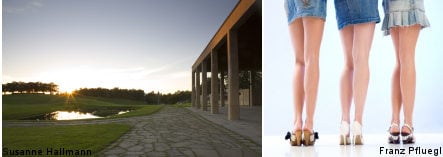Why do many Swedish men—particularly the middle-aged variety—wear socks with their sandals on a warm summer day? I mean, the whole idea of sandals is to let the air tickle your toes.
Other men in this country wear shorts with black socks and leather shoes. I admire their courage but that particular sartorial style hurts my eyes. When a hot day finally comes to this country, people seem to lose their minds– some heavily made-up young girls wear skirts so short it seems like they forgot to finish dressing.
Those were some of my critical observations as I took the Metro on the long journey towards the Stockholm subway stop called Skogskyrkogården, otherwise known as “Stockholm’s Woodland Cemetery.” It was delightfully warm outside and seemed like a nice day to visit a graveyard.
Armed with a mini-notebook, a pen and a pair of gold-rimmed sunglasses that were probably the height of fashion 20 years ago, I strolled merrily past a bronze plaque that informed me that this cemetery has been designated by UNESCO as a World Heritage Site. The Royal Palace at Drottningholm is the only other place in Stockholm honoured in that manner.
At the entrance to the cemetery is a large detailed map, but I didn’t pay close attention to it because I planned to visit the Visitors’ Centre and pick up a brochure. Big mistake.
When I finally found the Centre after wandering about aimlessly for almost an hour, the only brochure available turned out to be virtually useless.
The cemetery is “significant to all humanity,” the brochure claimed, for its “blend of distinctive Nordic landscape, architecture and ornamentation.” That isn’t much of an explanation in my book. If you can read Swedish and have a magnifying glass, you can also discover that this Stockholm cemetery was created between 1917 and 1920 by two young architects, Erik Asplund and Sigurd Lewerentz.
Since I have lived here for decades, I happened to know that Asplund was the brilliant architect who also designed the capital city’s main library. Of course, no one wants to turn a graveyard into a tourist attraction. But this is the biggest graveyard in the country and it is listed in virtually all tourist guidebooks. Therefore, it seems to me, it wouldn’t hurt to provide a bit more information than a single paragraph and a photo caption .
Be that as it may, Skogskyrkogården is a nice place for a stroll. The main attraction for most visitors is probably the grave of Hollywood legend Greta Garbo, who died in 1990 in New York City. The reclusive Swedish movie star is buried in a small grass-covered raised circle, decorated by a modest arc of bright red begonias. Her marble headstone is adorned by an inscription of her own gilded signature, with no dates or ornamentation.
The simplest grave I spotted is simply labeled “Mor” (Mother) and contains no other information than a date of birth, 1901, and a date of death, 1956. That person born at the turn of the century presumably played many different roles in her life– baby, child, girlfriend, student, wife and perhaps she had a profession. But whoever planted flowers at her grave remembered her simply as their mom, and that was enough.
The unusual manner in which the graves are interspersed with pine and birch trees at the Woodlands Cemetery is lovely and natural, creating a sense of harmony and peace. Live flowers have been planted by survivors at nearly all of the newer gravestones– there are begonias, fuschias, pansies, miniature roses and many others types; not a plastic flower in sight as might be the case in an American cemetery.
Most of the headstones of Swedes who died 20 or 30 years ago are, well, rectangular and boring. Instead of using different sorts of headstones or individualized decorations, flowers of all sorts seem to have have been selected with care and deliberation; there’s a virtual riot of colour when it comes to choice of graveside foilage.
There are few figurative decorations on the Swedish graves, almost no angels and the crosses are usually small and discreet. Minimalism rules, even after death. The newest headstones come in all shapes, sizes and forms; they are generally more personalized and some have a ceramic or stone dove or pigeon on top.
One of the most common types of ornamentation on the Swedish graves are rays of sunlight. Does this symbol have a special religious significance? It seems to me a hopeful sign—the buried person may have endured miserable Scandinavian weather for nine months of every year for 70 or 80 years, but the rays of sun on the headstones suggest new beginnings and the comfort of a warm day.
The Swedes are cleverer than most when it comes to living and dying in harmony with nature. Maybe one of these centuries they will also learn how to dress properly in warm weather.




 Please whitelist us to continue reading.
Please whitelist us to continue reading.